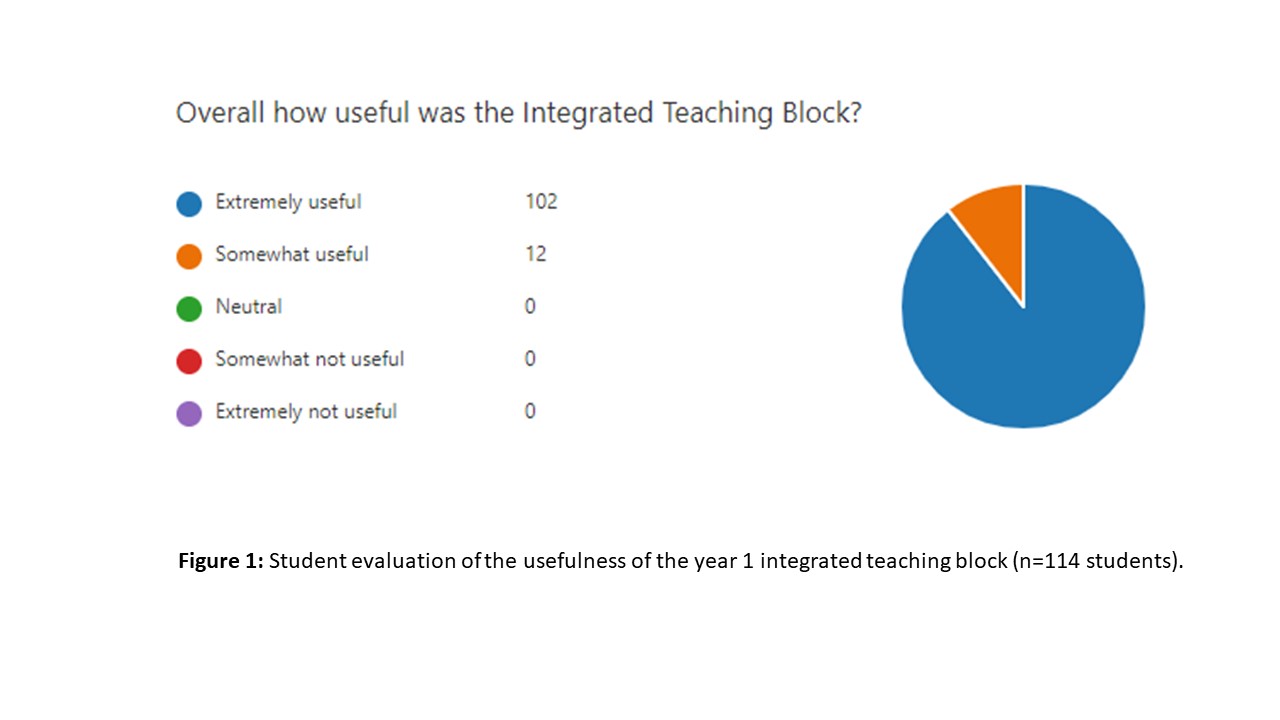Integrated medical courses, in which scientific knowledge is taught alongside clinical training, have proved successful as a model for training doctors. Ideally, integrated learning is embedded throughout the curriculum; however, in practice multiple issues such as resourcing, timetabling etc., can act as barriers. In this study we describe an innovative integrated teaching block combining self-directed online learning with tutor lead, hands on practice. The module was conceived partly to mitigate for teaching disruption caused by the COVID pandemic and optimise learning opportunities. The module aimed to develop clinical reasoning skills and highlight the reliance that these skills have on an understanding of the underlying medical sciences. Interactive online cases containing videos of simulated clinical scenarios that integrated content across Clinical Skills, Anatomy and Physiology were created. Key themes taken from teaching of the respiratory, cardiovascular, and abdominal systems were included. The session was delivered to year 1 of the MBBS programme at Barts and the Royal London, QMUL (cohort size of approximately 400 students). Students were provided with the opportunity to critically evaluate the online scenarios and then apply their knowledge in small group, tutor lead practical sessions. Module evaluation was collected across the whole cohort. The feedback questionnaire asked students to rate statements on a five-point scale from completely agree to completely disagree. Results revealed that overall, 89% of student found the session extremely useful, with the remainder scoring it as useful (Figure 1). A total of 93% of students agreed that integrated teaching block helped to link an understanding of anatomy, physiology and clinical skills when interpreting clinical scenarios and 82% agreed that the cases helped to put the learning into context. Students were asked to comment on what was particularly good about the Integrated Teaching Block. The quantitative data was supported by responses from individual students. “the clinical skills, anatomy and physiology sessions were all linked by scenarios which helped gain an overall understanding of the modules.” “I loved how seamless the integrated teaching week was where anatomy, physio and clinical skills are intertwined appropriately w the scenarios given”. “I gained so much more confidence by being able to learn clinical skills in person, as I feel like I can now link anatomy and physiology to an actual skill and being able to examine another person.” When asked what could be improved most students felt that more sessions could have been provided. Building on the success of this module and lessons learned, we are applying a similar approach in year 2 of the medical course. The pandemic has provided significant challenges to delivering practical teaching, especially to large cohorts. However, by working across disciplines we show that it is possible to provide valuable blended learning opportunities for medical students.
Physiology 2021 (2021) Proc Physiol Soc 48, OC12
Oral Communications: Collaborative approaches to deliver integrated medical teaching: A case study
Rachel Ashworth1, Oliver McKinney1, Farah Jaffar1, Sophie Moriarty1, Paula Vickerton1, Devina Raval1
1 Queen Mary, University of London, London, United Kingdom
View other abstracts by:
Where applicable, experiments conform with Society ethical requirements.

